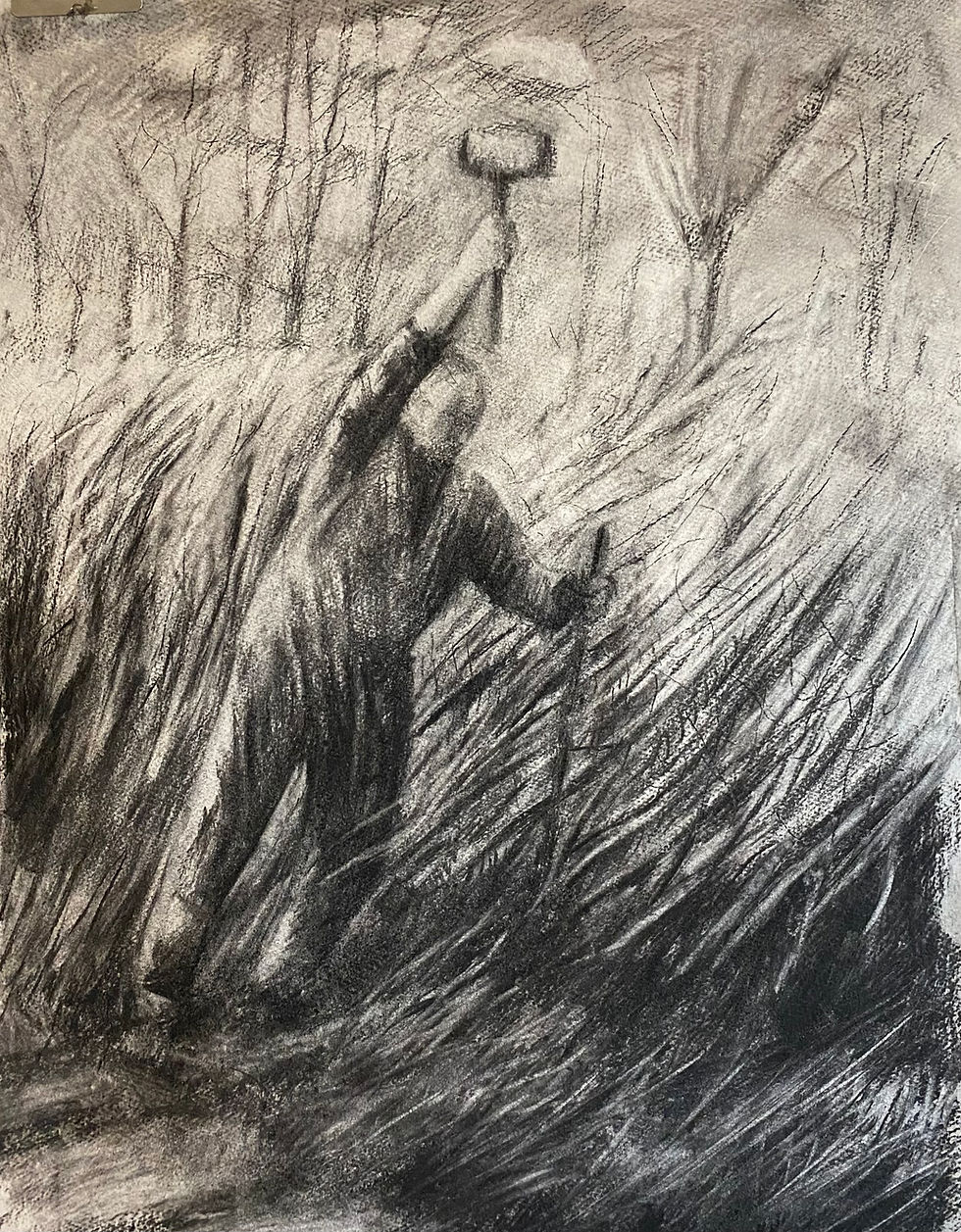Horsehair weaving
- Kate Lynch

- Sep 15, 2021
- 2 min read
Updated: Sep 24, 2021
It was a great privilege to spend time at John Boyd Textiles in Castle Cary, the historic company still weaving horsehair on their original Victorian looms. For at least two centuries the horsehair came from local working horses used on farms and for transport - the horses' tails were cut for practical reasons - and they were washed in the town Horsepond. Now the horsehair comes from Mongolia, where there are still working horses. The hair is all from living horses. Here, Duncan is hackling horse tails he has dyed, combing them through a bed of steel pins, the same steel pins used over 100 years ago.

Anna Smith owns the company. She has a background in textiles and production engineering. She kindly showed me around, telling me the fascinating history and explaining the processes. I was interested to hear how so many clever mechanical and engineering inventions all over the country happened with the Child Education Act in 1870. Here in Castle Cary, children had been working at hand looms, handing each single horse hair to the woman at the loom, but after 1870 this wasn't possible, and John Boyd had his mechanical loom designed and built. They are still in use today. The original ingenious mechanism for picking up each single horse hair for weaving was patented by John Boyd and there is no modern equivalent. Incredible Victorian engineering. The pounding looms are tended by hand by weavers who work directly on the fabric, putting in selvedges, untangling and unpicking, letting the cotton or linen out. The machines are warped up with linen or cotton, and it is the individual horse hairs which are woven across, making one of the most tough natural fabrics. Horsehair fabric is used today for upholstery and in the fashion industry. There are also modern applications because of its acoustic properties and it is used for the walls of private cinemas.

I made several drawings and took photographs and back in my studio I made the painting of Duncan hackling and a larger charcoal drawing (local willow charcoal) - of Tina at the loom.
Many thanks to Anna Smith for her welcome and everyone at John Boyd for taking such an interest in this project. I loved my visit! It's a wonder that the old Victorian looms are still in use and I enjoyed the dye room where the white horse tails are dyed such a gorgeous palette of vibrant colours. So many different processes with such an old and interesting history. This is a very old local company and many generations of families have worked here.
My project ''Craft - Somerset Portraits and Voices' involves painting and drawing craftspeople at work and collecting their stories. There will be an exhibition and book featuring 28 craftspeople - blacksmiths, farriers, stone carvers, bee skep maker, hedgelayers, dry stone waller, thatchers, potters, brushmaker, riddlemaker, weavers, hand made paper maker, and many more.
The collection will be exhibited at the Somerset Rural Life Museum, Glastonbury, in Spring 2022. Book launch at the same time. Please add your name to the mailing list for news. My instagram @katelynchartist



Comments